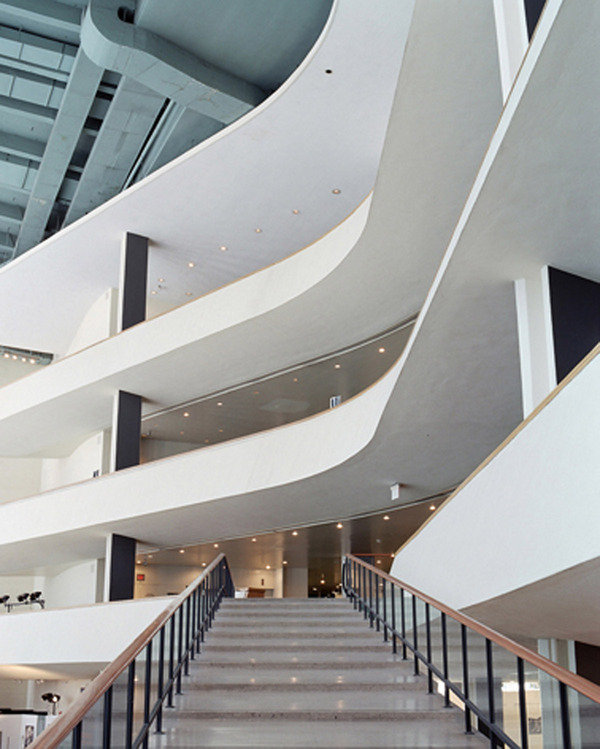Ben Murphy
dal 20/1/2012 al 25/2/2012
Segnalato da
20/1/2012
Ben Murphy
Stieglitz19, Antwerp
Un-Building. With the series of over 100 photographs that he produced on the UN-building over a period of 15 months the British photographer provides us with a unique glimpse into the stage set of this workshop.

The seat of the United Nations (1947-1950) constitutes one of the urban icons of New York City.
Together with the Empire State Building and the Chrysler Building, the tall and slender volume of the Secretary Building of the complex marks the skyline of Manhattan on approach from the east. Films like Alfred Hitchcock’s North by Northwest (1959) of, more recently, Sydney Pollack’s The Interpreter (2005), further established the building’s popular reputation. In architectural history, however, the building does not really count as a masterpiece. At times attributed to Le Corbusier or Oscar Niemeyer, the complex in fact was produced via a peculiar, often conflict-driven collaboration of an international team of designers, including both flamboyant figures mentioned and headed by Wallace K. Harrison, the rather pragmatic architect who had already authored the Rockefeller Center.
Critics deplored the building’s lack of monumental grandeur and regarded it rather as an early predecessor of ‘corporate modernism’, the rather despised idiom of elegant office towers with glass façades which became an international standard in the postwar era. Harrison aptly countered such critique however, by stating that the UN-building was to be considered as a functionally designed “workshop - rather than a symbol- for peace”.
With the series of over 100 photographs that he produced on the UN-building over a period of 15 months, just before the large scale renovation of the complex started in 2007, the British photographer Ben Murphy provides us with a unique glimpse into the stage set of this workshop. With the fascination and precision of an archivist, Murphy not only documented the well-known spaces such as the entrance lobby or the General Assembly Hall, the sculptural treatments and luxurious choice of materials of which stimulated his imagination –the Assembly Hall for instance reminds him of a set of the Thunderbirds film. He also shot the more hidden spaces of this apparently inviting, yet in reality highly closed off complex: the technical rooms full of machinery and wires, places for the storage of documentation, the map room, the backrooms where preliminary discussions are held, the kitchen,… With this series of images in deeply saturated colors, Murphy captures “a certain melancholic beauty” of this place that was once conceived as the center from which a better world could be designed. In a certain sense, his photographs thus are a tribute to an idealistic project which, as history tells us, has not come to fruition. Rather than showing us the “workshop”, Murphy’s photographs of the empty spaces of the UN-building depict the “museum of peace”.
The British photographer Ben Murphy gained international acclaim with his ‘Riverbed’ series on a settlement of Brits living in a dried out river in Andalusia, Spain. Since then, he helds shows at, among others, The Courtauld Gallery and Plymouth City Art Gallery. Photographs of his are in the permanent collection of the Victoria &Albert Museum and the National Portrait Gallery. He has also been featured in publications such as Portfolio, The Telegraph Magazine, The Sunday Times, Wallpaper, and The Independent. In 2005 Thames and Hudson published a book with his photographs of the U.N Building. Ben Murphy has been shortlisted for the Sovereign Price.
Opening 21/1 at 4 pm in presence of the artist
Opening by Johan Lagae , University of Ghent, non European modern Architecture
Stieglitz19 (new adress)
Klapdorp 2 - Antwerp
Hours: Fri : 16-18 Sat/sun 14-18
Free admission



